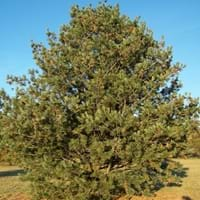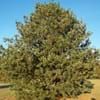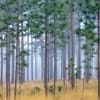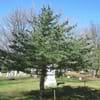Life Span
Perennial
Perennial
Type
Needled or Scaled Evergreen
Flowering Plants
Origin
Western United States, Canada, Mexico
Italy, Southern Europe, western Balkans
Types
Pinus albicaulis, Pinus monticola
not available
Number of Varieties
Not Available
Habitat
Dry areas
Islands, Not Available
USDA Hardiness Zone
3-7
7-10
Sunset Zone
A1, A2, A3, 1a, 1b, 2a, 2b, 3a, 3b, 4, 5, 6, 7, 8, 9, 10, 11, 14, 15, 16, 17, 18, 19, 20, 21
21,22
Habit
Oval or Rounded
Upright/Erect
Flower Color
Not Available
Lavender, Light Blue, White
Flower Color Modifier
Bicolor
Bicolor
Fruit Color
Not Available
Non Fruiting Plant
Leaf Color in Spring
Green, Blue Green
Green, Light Green
Leaf Color in Summer
Green, Blue Green
Green, Light Green
Leaf Color in Fall
Green, Blue Green
Green, Light Green
Leaf Color in Winter
Green, Blue Green
Light Green
Leaf Shape
Needle like
Compound
Plant Season
Spring, Summer, Fall, Winter
Summer, Fall
Sunlight
Full Sun
Full Sun, Partial Sun
Type of Soil
Loam, Sand
Loam
The pH of Soil
Acidic, Neutral
Acidic, Neutral
Soil Drainage
Well drained
Average
Bloom Time
Not Available
Early Summer, Summer, Late Summer
Tolerances
Drought
Heat Tolerance
Where to Plant?
Ground
Ground, Pot
How to Plant?
Grafting
From bulbs, Seedlings, Stem Planting
Plant Maintenance
Low
Low
Watering Requirements
Do Not over Water, Requires regular watering
Average Water Needs, Do Not over Water, Never Over-water, Requires regular watering
In Summer
Regular watering required
Lots of watering
In Spring
Moderate
Moderate
In Winter
Average Water
Average Water
Soil pH
Acidic, Neutral
Acidic, Neutral
Soil Type
Loam, Sand
Loam
Soil Drainage Capacity
Well drained
Average
Sun Exposure
Full Sun
Full Sun, Partial Sun
Pruning
Prune if you want to improve plant shape
Remove damaged leaves, Remove dead branches, Remove dead leaves, Remove dead or diseased plant parts
Fertilizers
All-Purpose Liquid Fertilizer, Less fertilizing
fertilize every 2-3 weeks while growing, fertilize in growing season
Pests and Diseases
Rust
fungus
Plant Tolerance
Drought
Drought, Heat Tolerance
Flower Petal Number
Single
Single
Fragrant Bark/Stem
Yes
No
Showy Foliage
No
Not Available
Foliage Texture
Fine
Not Available
Foliage Sheen
Not Available
Not Available
Attracts
Not Available
Birds, Insects
Allergy
no allergic reactions
Toxic
Aesthetic Uses
Showy Purposes
Beautification, Landscape Designing, Showy Purposes
Beauty Benefits
No Beauty Benefits
Not Available
Environmental Uses
Wildlife, Windbreak
Air purification
Medicinal Uses
No Medicinal Use
Asthma, Cough, Unknown
Part of Plant Used
Bark
Flowers, Leaves
Other Uses
used for making roof trusses, poles, joists, piles, Used in construction, Wood is used for making furniture
Decoration Purposes, Showy Purposes, Used as Ornamental plant
Used As Indoor Plant
No
Yes
Used As Outdoor Plant
Yes
Yes
Garden Design
Feature Plant, Screening, Wind Break
Mixed Border, Wildflower
Botanical Name
PINUS flexilis
CAMPANULA pyramidalis
Common Name
limber pine
Chimney Bellflower
In Hindi
limber pine
Chimney Bellflower
In German
limber pine
Schornstein Glockenblume
In French
limber pine
cheminée Bellflower
In Spanish
limber pine
Chimenea Bellflower
In Greek
εύκαμπτος πεύκο
καμινάδα καμπανούλα
In Portuguese
limver foi
chaminé Bellflower
In Polish
limver poszedł
komin Bellflower
In Latin
limver abiit
caminorum purgatores Bellflower
Phylum
Tracheophyta
Tracheophyta
Class
Pinopsida
Magnoliopsida
Family
Pinaceae
Campanulaceae
Clade
Not Available
Angiosperms, Asterids, Eudicots
Tribe
Not Available
Not Available
Subfamily
Not Available
Not Available
Number of Species
Not Available
Not Available
Properties of Limber Pine and Chimney Bellflower
Wondering what are the properties of Limber Pine and Chimney Bellflower? We provide you with everything About Limber Pine and Chimney Bellflower. Limber Pine doesn't have thorns and Chimney Bellflower doesn't have thorns. Also Limber Pine does not have fragrant flowers. Limber Pine has allergic reactions like no allergic reactions and Chimney Bellflower has allergic reactions like no allergic reactions. Compare all the properties and characteristics of these two plants. Find out which of these plant can be used as indoor plant. If you are interested to decorate your house and garden, find out aesthetic uses, compare them and select the plant which will beautify your surrounding. Along with beautification, try comparing medicinal and edible uses of Limber Pine and Chimney Bellflower and you can choose the plant having best and most benefits.
Season and Care of Limber Pine and Chimney Bellflower
Season and care of Limber Pine and Chimney Bellflower is important to know. While considering everything about Limber Pine and Chimney Bellflower Care, growing season is an essential factor. Limber Pine season is Spring, Summer, Fall and Winter and Chimney Bellflower season is Spring, Summer, Fall and Winter. The type of soil for Limber Pine is Loam, Sand and for Chimney Bellflower is Loam while the PH of soil for Limber Pine is Acidic, Neutral and for Chimney Bellflower is Acidic, Neutral.
Limber Pine and Chimney Bellflower Physical Information
Limber Pine and Chimney Bellflower physical information is very important for comparison. Limber Pine height is 1,070.00 cm and width 610.00 cm whereas Chimney Bellflower height is 120.00 cm and width 45.70 cm. The color specification of Limber Pine and Chimney Bellflower are as follows:
Limber Pine flower color: Not Available
Limber Pine leaf color: Green and Blue Green
Chimney Bellflower flower color: Lavender, Light Blue and White
- Chimney Bellflower leaf color: Green and Light Green
Care of Limber Pine and Chimney Bellflower
Care of Limber Pine and Chimney Bellflower include pruning, fertilizers, watering etc. Limber Pine pruning is done Prune if you want to improve plant shape and Chimney Bellflower pruning is done Remove damaged leaves, Remove dead branches, Remove dead leaves and Remove dead or diseased plant parts. In summer Limber Pine needs Regular watering required and in winter, it needs Average Water. Whereas, in summer Chimney Bellflower needs Lots of watering and in winter, it needs Average Water.





